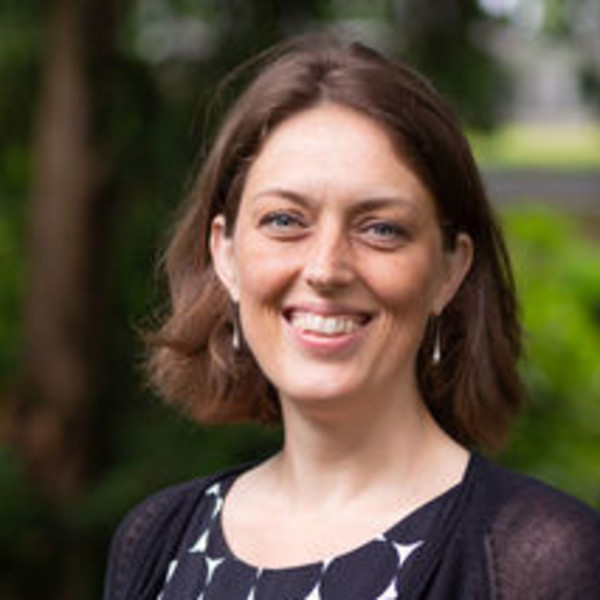
“Appreciative Inquiry has the potential to unleash transformational change.” Professors Ron Fry and Gervase Bushe agree upon that. “It has been proven, in practice, but also by research. So the real challenge now is to figure out how to really make that potential come true.”
They delivered a keynote speech during the World Appreciative Inquiry Conference. In the first half they stressed the generative nature of AI, during the second part they explored different things we can do as AI practitioners, to increase the impact of any AI intervention.
Powerful questions
It all begins with the questions. Gervase Bushe: “Which questions should we ask to elicit conversations that challenge the status quo? I found we need:
- Surprising questions. Asking the same won’t help – even the most powerful question loses its effect after a while;
- Questions that engage heart and spirit. Just the head is not enough;
- Reframing and unsettling questions: the ones that help you rethink what you take for granted;
- Questions that help build a relationship as you discuss them.
You don’t just ‘find’ questions that fit these criteria. You need to tweak and craft them carefully.”
Making good use of stories
Another element common to almost all AI interventions, is stories. Gervase Bushe has some good advice: “I more and more like to do ‘the storytelling-thing’ before the actual meeting. We can get more out of the stories, I find, if we let people share them before hand, write them up and then use the stories as a jumping off place for our inquiry into the generative topic.”
A way to make the most of ‘Discovery’ according to him: “I begin by letting people read the stories in a small group, one at a time. And then brainstorm. What associations and thoughts are triggered?” He stresses that it’s not about analyzing them. It is really about using the stories as a spark for new ideas. “And then the group just keeps on reading until the brainstorm fades out…. In my experience it leads to great results very quickly.”
Dreaming as a first step to action
Ron Fry explains: “Dreaming is to me about creating a mindset of possibilites, about seeing bigger wholes. It works very well to use kinetic experiences. So as AI practitioners we always have people making something; creating stuff, using imagery and materials.”
He has some very clearcut advice on how to make the most of such activities. “Just fill the space with imagery. Do not try to order them, or focus on just one, or look for the common thread. Just leave the images as images. Let them be. People also don’t need to look at all of them – sometimes it is better only to share stuff in small groups. You do not need an overview. Our brains can’t even handle it.”
The real relevance of these dreams in the shapes of posters, drawings, collages or whatever is the fact that they are being made, Ron explains: “Materializing our imagery is an important step towards taking our intentions into action.”
Generative design: play and embrace your mistakes
That brings us to Design. In both speakers’ view, Dream and Design do not have clearcut borders. Fry: “Generative design is about making visible our highest hopes, dreams as a first signal of inention to act. The important part is that we not talk about actions, or make action plans, but rather build something, design it.” Even if it is a first prototype.
“Key to an impactful Design phase is that people dare to engage. If all went well, you have built some trust in the earlier stages. But it still requires a leap of faith. And then, that they engage in play, start trying, dabbling…” The remark inspires a tweet from @msplitt: ‘Maybe it’s the Daring-Phase and not the Destiny-Phase? #2012waic #Bushe’
Fry builds a case for embracing our mistakes.: “I know of a design company, where the first thing you see if you walk in their building, is their Wall of Mistakes. They are not afraid of it, they don’t hide them. They embrace them because they were small steps that lead towards the successes. Very significant. We have to find ways to let the mistakes also be here.”
Destiny: improvise! (not projectize)
A truly generative AI process leaves people knowing where they want to go, and energized to act. Gervase: “That is what generativity is about. That people start acting, don’t wait for permission, but take voluntary, visible action.”
“This is why getting the whole in the room is so important. If you have the whole in the room you don’t need any one to control actions afterwards. You don’t need to wait. You can make decisions on the spot. And start.”
The real danger here is to ‘projectize’ too quickly, Bushe warns. “If you really want people to do something you need to help them make the first step. Some voluntary, visible step of action. Pay attention – and when you see good stuff happening: fan the fire, find ways to amplify the efforts.”
To managers or leaders he likes to compares their role to that of a farmer: “The seeds have been planted. Now go see what happens. Give fertilizer to the stuff you like, pull out the weeds. Especially in hierarchic organisations people can find that very refreshing.”
It’s not just an idea. They are backed up by experience and research. “Our studies have shown that the improvisational approach leads to far greater success. Build it step by step, learn from what happens, include new insights and build sustainable action out of that.”
Enabling conditions for ongoing success
And that basically is the key for the next steps as well. The last question Fry addresses is how to foster ongoing success. Here’s some of his tips:
- Get the key decision makers fully engaged in the inquiry. Get the ‘right people in the room’. Fry: “I always try to include more external voices than the client is comfortable with. Get the client, patient, end-user… in the room. That makes such a big difference. Also: get the people who are financially responsible in the room…very important, easily overlooked.”
- Strive for stakeholder alignment – not agreement. If you keep the conversation alive, you can work with the differences in opinion and needs.
- Pay attention to how people who where there, invite new people. The circle expands constantly, how are new people included? Are they invited to share their stories and dreams, too?
- Keep the narrative alive…. Create a ‘hub’ (like a website, newspaper, regular meetings) where new stories can be shared and learnings can be harvested. So that the ongoing improvisations are made visible.
- Start followup meetings with stories and experiences – to avoid falling into ‘regular meeting mode’.
Generative keynote
Time was up. But the ideas are not! Ron and Gervase themselves stress that these are not the ‘definite’ answers, and invite everyone to keep exploring and experimenting: “how do we make AI as generatively as possible?”.
They get a long and enthousiastic applause from the audience. For their wise words and practical advice. The energy with which they presented their story. But I think mainly for this fundamental question, which put into words where people in the room feel the focus of AI really lies. And what 'positivity' is really about.
Further reading
- This blog is a reflection of the 2d part of the WAIC2012keynote delivered by Ron Fry and Gervase Bushe. You can find part 1 here.
- Leif Josefsson (@ljosefss) made his notes during the keynote in Google Drive. It’s an experiment! He invites people to add and respond. Here’s the link.
- Background articles (such as the meta-study on AI projects that the speakers refer to) can be found on Gervase Bushe's homepage (scroll down for the publications)
- This blog was originally posted at the WAIC2012 homepage.
On 2012WAIC
The World Appreciative Inquiry Conference was held from the 25-28th of April, 2012, in Ghent. Some 600 people from over 45 countries participated in this meeting, sharing case stories, theories and tools on Appreciative Inquiry. Important AI scholars, such as David Cooperrider, Diana Whitney, Ron Fry, Ken Gergen, Danielle Zandee, were all present. Our colleagues Luc Verheijen and Luk Dewulf were part of the local organizing committee for this event. The Conference Website 2012WAIC holds all keynotes as webcasts, as well as blogs with background information.
